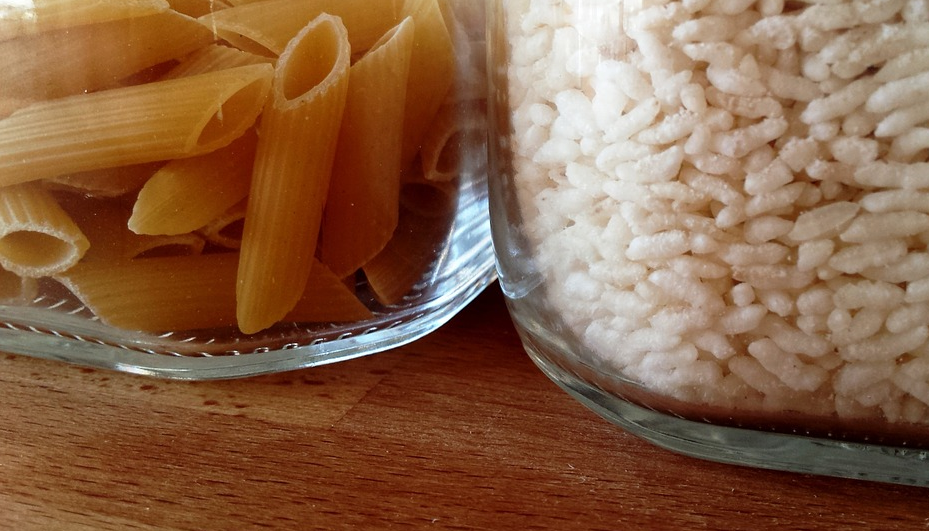The hidden sugar bombs in your pantry: Everyday foods that spike your blood sugar
11/11/2025 / By Willow Tohi

- Refined carbohydrates like white bread, pasta and many breakfast cereals can spike blood sugar as dramatically as sugary sweets.
- The Glycemic Index (GI) and Glycemic Load (GL) are tools to understand how different foods affect blood sugar levels.
- Food sequencing—eating fiber-rich vegetables and proteins before carbohydrates—can significantly blunt blood sugar spikes.
- Swapping high-GI staples like white rice and potatoes for low-GI alternatives like cauliflower or quinoa offers a strategic dietary defense.
- Managing blood sugar through diet is a powerful, accessible strategy to reduce the risk of insulin resistance and Type 2 diabetes.
In the quest for better health, many diligently avoid the obvious sugar in sweets and sodas, unaware that a more significant threat may be lurking in their daily meals. Emerging insights from nutrition science reveal that common, seemingly innocent carbohydrates—the white bread, breakfast cereals and potatoes that form the backbone of many diets—can trigger blood sugar spikes just as severe as a handful of candy. This understanding, championed by health experts and supported by decades of research, is shifting the focus of diabetes prevention and metabolic health from simply counting sugar grams to analyzing the quality of carbohydrates and the structure of every meal.
The Glycemic Index: A flawed but useful map
Central to this discussion is the Glycemic Index (GI), a measure developed to classify carbohydrates based on their immediate impact on blood sugar levels. Foods are ranked on a scale from 1 to 100, with pure glucose serving as the benchmark at 100. High-GI foods (70 or above), such as white bread, corn flakes and instant mashed potatoes, are broken down rapidly, causing a swift and significant surge in blood sugar. This prompts a correspondingly large release of insulin, the hormone tasked with ushering sugar into cells for energy.
As health coach Steve Bennett explains, when this cycle repeats meal after meal, the body’s cells can become less responsive to insulin—a condition known as insulin resistance, which is a primary driver of Type 2 diabetes. Conversely, low-GI foods (55 or less), including most fruits, legumes and whole grains, are considered “insulin sparing.” They break down slowly, providing a steady release of energy without the dramatic metabolic roller coaster. However, the GI is not a perfect tool. Its limitations include variability between different cultures and research teams, and it does not account for portion size, which led to the development of the more advanced Glycemic Load (GL), which factors in both the quality and quantity of carbohydrates consumed.
Everyday culprits and strategic swaps
The practical application of this science involves identifying high-GI staples and learning how to replace or reframe them. The most common offenders are often found at the center of the plate:
- Breakfast cereals: Many popular cereals, like corn flakes (GI 81), act like sugar bombs, initiating a cycle of spikes and crashes first thing in the morning. Better choices include whole oats or cereals with high fiber and protein.
- White rice and pasta: These refined grains are stripped of their fiber, leading to rapid digestion. Swapping white rice for cauliflower rice or quinoa, and choosing whole-grain pasta, can dramatically reduce the glycemic impact.
- Potatoes: A cornerstone of Western diets, potatoes, especially when baked or fried, have a high GI. Alternatives like sweet potatoes, yams, or the underappreciated celeriac offer more nutrients and a gentler effect on blood sugar.
- Tropical fruits: While nutritious, very ripe bananas, mangoes and pineapples have high sugar content. Berries like raspberries and blackberries are consistently better choices for minimizing blood sugar fluctuations.
The power of sequence and pairing
Perhaps one of the most accessible strategies for mitigating blood sugar spikes doesn’t require eliminating favorite foods, but simply changing the order in which you eat them. Research, including a study on nuts, has shown that consuming foods rich in protein, fat, or fiber before carbohydrates can significantly reduce the subsequent blood sugar response. Bennett advocates for a “fiber-first” approach: starting a meal with leafy greens and non-starchy vegetables, which he describes as forming a “fibre-plug” that slows digestion. This should be followed by proteins and fats, saving the carbohydrates for the end of the meal. This simple reordering can halve the sugar spike compared to eating carbs first, making it a powerful tool for metabolic management.
A dietary prescription for metabolic health
The growing understanding of how everyday foods impact blood sugar represents a significant shift in nutritional science, moving beyond simplistic “sugar-free” mantras to a more nuanced view of carbohydrate quality and meal composition. Historical dietary guidelines that emphasized low-fat eating often inadvertently promoted high-carbohydrate diets rich in refined grains, contributing to the current diabetes epidemic. Today, the evidence is clear that a diet focused on low-glycemic, fiber-rich whole foods—complemented by strategic food pairing and sequencing—is not just a dietary choice but a critical intervention. This approach offers a practical, sustainable path to stabilizing energy, promoting weight loss and fundamentally reducing the risk of metabolic syndrome and Type 2 diabetes, empowering individuals to take control of their health one deliberate bite at a time.
Sources for this article include:
Submit a correction >>
Tagged Under:
blood sugar, dangerous foods, diabetes science, food science, food sequencing, food supply, fruit, glycemic index, glycemic load, grocery, health science, metabolic health, prevent diabetes, products, refined carbohydrates, stop eating poison, sugar bomb, Type 2 Diabetes
This article may contain statements that reflect the opinion of the author
